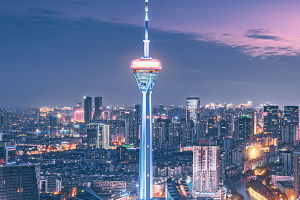In the long river of human civilization, iconic buildings are scattered around the world like brilliant pearls.
They are not only a form of artistic expression but also symbols and representations of various cultures, often referred to as "frozen memories".
With the development of Western new historiography, iconic buildings have increasingly drawn the attention of historians.
Frank Lloyd Wright once said, "Architecture is the mother of all arts. Without our architectural style, we would not have the soul of our civilization." The world's most outstanding architecture cleverly combines materials with careful consideration of location.
When you consider the history and original purpose of a building together, it becomes even more intriguing. The world's most famous buildings have influenced creative minds from all corners of the globe, inspiring anyone with a hint of creativity.
Architectural designs capture the details of specific moments, much like photographs, thus providing us with a wealth of information about their respective periods of construction. However, unlike photographs, the physical structures of buildings evolve and have their life cycles. In the years following their construction, they become core areas and functional spaces in the lives of countless people.
Located in the city of Houten in the central Netherlands, the Rainbow House is one of the most iconic buildings in the city and a renowned tourist destination within the country. This building is famous for its unique appearance, attracting a large number of visitors.
Designed by Dutch architect Gerrit Rietveld, a prominent figure in the 20th-century modernist movement, the construction of the Rainbow House began in the late 1980s. Rietveld was commissioned to design a novel and creative residential building, and his design concept combined the simplicity of modernism with a unique use of color, resulting in the breathtaking Rainbow House.
The exterior walls of the Rainbow House are painted with a gigantic rainbow, with bright and vivid colors that evoke a sense of vitality and joy. This striking color scheme makes the Rainbow House stand out in the streetscape of Houten, becoming a unique landmark. Whether during the day or at night, visitors can't help but be captivated by the unique charm of the Rainbow House.
In addition to its eye-catching exterior, the interior of the Rainbow House is equally stunning. Despite its modern appearance, the interior retains the traditional Dutch style, simple yet practical. The spacious living room and abundant natural light create a comfortable and warm atmosphere as if stepping into a dreamlike world.
The Rainbow House is not just a building; it is also a work of art, showcasing the architect's unique understanding of color and form. Its presence not only enriches the cultural landscape of Houten but also stands as a highlight in the history of Dutch architecture.
In conclusion, the Rainbow House is a unique and enchanting building that attracts visitors from around the world with its distinctive exterior and interior design. It is not only a source of pride for Houten but also a marvel in the Dutch architectural realm, showcasing the creativity and imagination of its designer.
Visitors who come to admire the Rainbow House not only appreciate its beautiful appearance but also experience the cultural and artistic values it embodies, leaving them with a lasting impression of this small city in the Netherlands.


